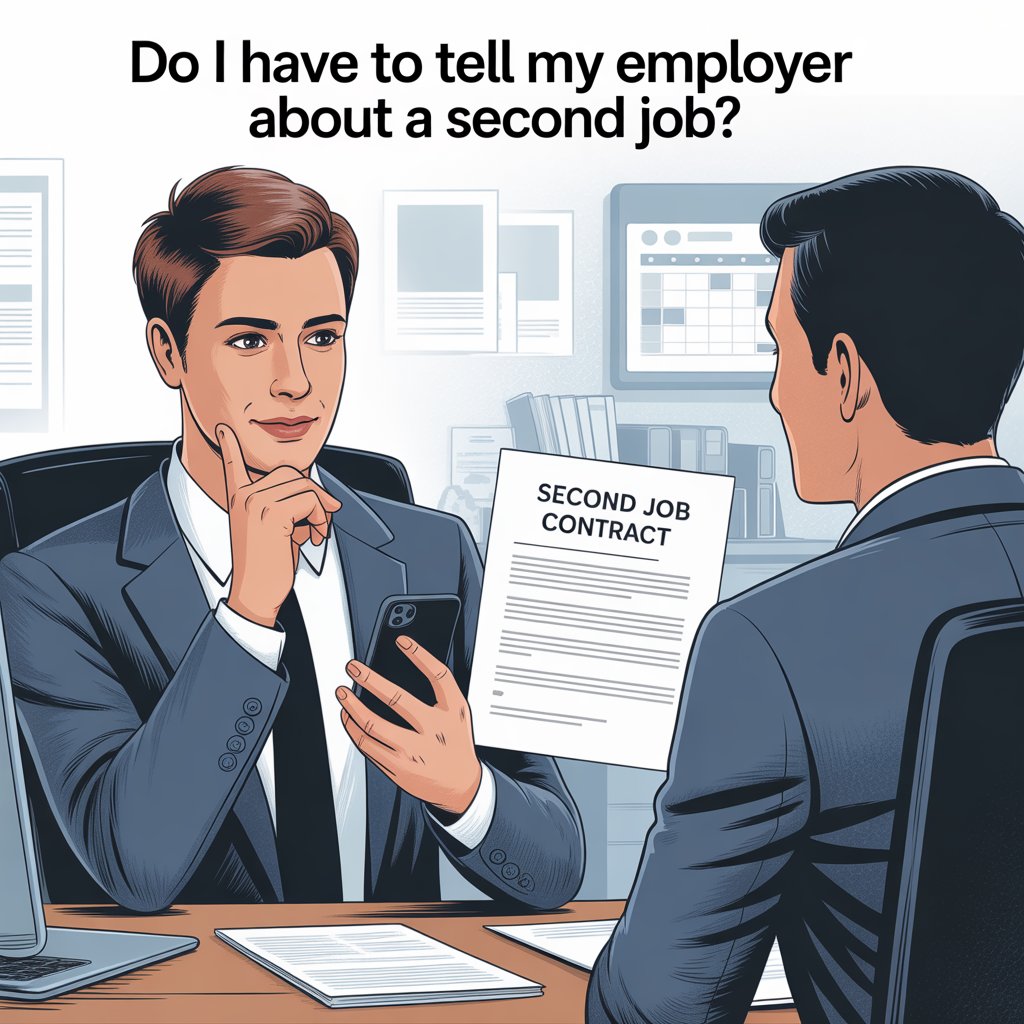Deciding to leave a job is rarely simple, and figuring out how to do it gracefully can feel a bit daunting. A two weeks notice letter is the usual, formal heads-up to your employer that you’re moving on, giving them a little breathing room to prep for your exit and shuffle your work around. Taking care with this letter really does help you leave on a good note, and you never know when you’ll cross paths with these folks again.

A solid notice should mention your final working day, say thanks for your time there, and maybe offer to help out during your last couple of weeks. There are tons of templates and examples out there—Resume Genius is a good spot to start—so you don’t have to reinvent the wheel.
Key Takeaways
- A two weeks notice letter gives your employer advance notice of your resignation.
- Being professional in your letter helps you leave on good terms.
- Using clear templates makes it easier to write your notice.
What Is a Two Weeks Notice Letter?
A two weeks notice letter is basically the standard way to let your employer know you’re planning to leave soon. It helps smooth out the transition for both sides and often ticks the boxes for legal or HR requirements.
Definition and Purpose
A two weeks’ notice letter is a formal heads-up to your employer that you’ll be leaving in—you guessed it—two weeks. You put your last day in writing, which gives everyone a clear timeline. This lets your boss start thinking about who’s picking up your work, and it makes things less awkward all around.
It’s mostly about keeping things respectful and professional. Honestly, it’s just the norm in most workplaces. That two-week window also gives you a chance to wrap up loose ends and say your goodbyes.
Most people simply state their last day, keep the tone polite, and don’t overcomplicate things. If you need a starting point, Indeed has some straightforward templates.
Notice Period Requirements
Usually, two weeks is the magic number. That means you’ll keep working for up to 14 days after you give notice, weekends and all. Some jobs ask for more or less time, depending on your role or what’s in your contract.
Employers really do appreciate a heads-up—it gives them time to make a plan. Sometimes, they’ll even let you leave sooner if it works for everyone. Curious about the ins and outs? There are plenty of stories and advice on Reddit and on Macaulay’s career blog.
Legal and Company Policy Considerations
Laws about notice periods are all over the place, depending on where you live. In a lot of places, jobs are “at-will,” so technically you can leave (or be let go) without notice. But if there’s a contract, you might be on the hook for a specific notice period.
Some companies spell out their rules in handbooks or contracts. Not following them could mess with your references or final paycheck, so it’s worth a quick read. Legally, you’re usually not forced to give two weeks, but it’s just good form—and it keeps doors open for the future. Plus, there might be policies about your last paycheck or benefits if you do (or don’t) give notice.
When to Submit Your Two Weeks Notice Letter
Picking the right moment to hand in your two weeks notice can make the whole process a lot less stressful. It also helps you avoid any last-minute hiccups with your pay or benefits.
Timing and Professional Courtesy
Giving two weeks notice is just the professional thing to do. Most places expect it, so they’re not left scrambling. If you’ve got a new job lined up, it’s smart to wait until everything’s official—background checks, paperwork, the whole nine yards—before you give notice. That way, you’re not stuck in limbo if something falls through.
Try not to give notice right before a big payday or in the middle of a huge project unless you really have to. Usually, you tell your boss first and then follow up with a written letter. If you want some pointers or a template, Indeed has you covered.
Understanding Your Employment Contract
Before you say anything, take a peek at your contract. Some roles—especially higher-ups or folks with special agreements—might need to give more than two weeks. Missing that detail could mean losing out on bonuses or vacation pay, or, in rare cases, legal trouble.
A quick checklist helps:
- Scan the section on resigning
- Double-check anything about final pay or unused vacation
- Make sure you’re sending your letter to the right people
Getting this right protects your reputation and your wallet. If you’re unsure, Indeed’s guide breaks it down nicely.
Special Considerations for Different Job Roles
Some jobs just need more lead time. If you’re a manager, in IT, or handling sensitive stuff, your company might want a longer notice period. Schools or healthcare jobs sometimes expect you to finish out a term or stick around until they find coverage.
On the other hand, temp or entry-level gigs might be okay with less. But even then, putting it in writing is always the best move. If you’re not sure, HR or the employee handbook should have the answer. Timing your notice right can really shape how your last days go—and how people remember you. For more on this, Vaco’s blog has some helpful examples.
Crafting a Professional Two Weeks Notice Letter
Your two weeks notice letter should get straight to the point: you’re resigning, and here’s when you’ll be gone. Keep it short, polite, and as professional as you can manage.
Key Components
There are just a few must-haves. Start with a clear statement that you’re resigning and when your last day will be—no need for long stories. This avoids any confusion about when you’re actually leaving.
A quick thank you—just a line or two—shows you appreciate the opportunity. If you can, offer to help train someone or tie up any loose ends. That kind of gesture goes a long way.
Here’s a simple breakdown:
| Section | Details |
|---|---|
| Resignation Statement | Clear intention to resign and last day |
| Gratitude | Thanks to employer or team |
| Offer to Assist | Voluntary help during transition |
Wrap it up with a formal closing and your signature—easy.
Writing Tips for Professionalism
Brevity is your friend. Use straightforward, polite language and stick to the facts. There’s no need to get chatty or use slang.
Try to end on a positive note, even if the job wasn’t perfect. Mention something you learned or enjoyed; it helps keep things civil. Leave out the drama—professionalism is all about making the transition smooth for everyone.
Start with a proper greeting and finish with something like “Sincerely.” Give it a quick proofread so you don’t miss any typos. Formatting it like a professional resignation letter makes it look polished, even if you’re feeling a little frazzled.
What to Avoid Including
Resist the urge to vent. Complaints about the job, coworkers, or management don’t belong in this letter. Don’t get into the weeds about why you’re leaving, unless it’s truly necessary. Keep personal details and criticisms out of it.
You don’t have to explain yourself—“personal reasons” works if you need to say anything at all. And absolutely leave out anything confidential.
Keeping it neutral and short helps you leave with your reputation intact. For more do’s and don’ts, check out these two weeks’ notice letter guidelines.
Essential Elements of a Two Weeks Notice Letter
A good two weeks notice letter covers a few basics that make the process easier for everyone. Clear info, a direct statement, and a positive tone all help keep things friendly.
Header, Date, and Recipient Information
Start with a header: your full name and address, the date, and then your manager’s name, title, and the company. This isn’t just for show—especially in bigger companies, it helps HR keep things straight.
Use everyone’s full name and correct job titles. It’s a small thing, but it shows respect and attention to detail.
Here’s how it might look:
| Line | Example |
|---|---|
| Full Name | Taylor Smith |
| Address | 555 Park Lane, Apt 12, City, State |
| Date | May 1, 2025 |
| Recipient Name | Jamie Brown |
| Title | Store Manager |
| Company Name | Safeway |
Leave a space between sections so it’s easy to read. Double-check names and dates—typos here are awkward.
Statement of Intent and Last Day of Work
Somewhere near the top, write a simple line saying you’re resigning and when your last day will be. For example: “I am writing to formally resign from my position at [Company Name], effective two weeks from today.”
Be specific about your last day: “My last day will be May 15, 2025.” This helps everyone plan and keeps things clear.
There’s no need to explain your reasons unless you really want to. These details matter for the record, as most guides will tell you.
Expressing Gratitude and Positivity
Add a quick thank you for the opportunities or experiences you had. Even if the job wasn’t your favorite, a simple “Thank you for the opportunities during my time at the company” works.
A little positivity goes a long way, especially if you might need a reference later. Be honest but keep it warm—focus on what you learned or enjoyed. Gratitude in a two weeks notice letter is a nice touch that employers remember.
Templates and Examples for Two Weeks Notice Letters
Your two weeks notice letter doesn’t have to be fancy—just clear, respectful, and suited to your workplace. Templates and real-world examples can make it way less intimidating, whether you’re sending it by email or printing it out.
Formal Resignation Letter Template
A formal resignation letter sticks to a business format and polite tone—think date, recipient’s name, job title, your notice, last working day, and a quick thank you.
Sample Template:
[Your Name]
[Your Address]
[City, State, ZIP Code]
[Email Address]
[Date]
[Recipient's Name]
[Company Name]
[Company Address]
Dear [Recipient’s Name],
I am writing to formally resign from my position as [Your Position] at [Company Name], effective two weeks from today. My last day will be [Last Day].
Thank you for the opportunities and support during my time here.
Sincerely,
[Your Name]
This resignation letter template is easy to tweak depending on the company or your situation.
Email and Printed Letter Examples
Resigning by email is pretty common now, especially for remote jobs. Some offices still want a printed letter, though. Either way, the message should be clear and straightforward—no need to complicate things.
Email Example:
Subject: Notice of Resignation
Dear [Manager’s Name],
I am resigning from my role as [Job Title], with my last day being [Date]. Thank you for your guidance during my time at [Company Name].
Best regards,
[Your Name]
No matter the format, include your last day and a note of appreciation. There are plenty more examples out there if you want to match a specific style.
Short and Detailed Sample Letters
Sometimes you just want to keep it short and sweet. Other times, especially if you’ve been around for a while, a little more detail feels right.
Short Sample:
I am resigning from [Job Title] at [Company Name], with my final day on [Date].
Detailed Sample:
Dear [Manager’s Name],
Please accept my resignation from [Job Title], effective two weeks from today. I appreciate my experiences and your support at [Company Name]. I will do my best to wrap up my current projects before leaving.
Sincerely,
[Your Name]
Workplaces vary, so pick the template that fits your situation. If you want more sample letters, there are plenty online.
Best Practices for a Smooth Transition
Leaving a job with a two weeks notice letter takes a bit of planning. If you do it right, everyone’s life gets easier—and you keep those bridges intact.
Offering Assistance and Next Steps
When you resign, it’s a good move to offer help with training your replacement or finishing up loose ends. It shows you care about the team and your reputation.
Suggest what should happen next—handover notes, a transition plan, maybe a checklist for daily stuff. Even just sharing a list of contacts and current projects can save everyone headaches later.
If you’re up for it, volunteering for an exit interview or a quick follow-up chat can help things go smoothly. Honest (but professional) feedback is always appreciated and can leave a lasting good impression.
Communicating with Your Team and Manager
Communication really matters here. Ideally, schedule a private chat with your manager to give notice and explain your decision. After that, follow up with a written letter to make it official. There are plenty of templates and tips on Indeed’s guide to two-week notice letters.
Once your manager knows, let your team or coworkers know soon after. Be direct and polite—no need to get into complaints or negativity.
A quick message with some thanks for the teamwork and support goes a long way. Let folks know you’re around for questions and that you’ll help with the transition.
Handling Tasks and Responsibilities
Before you head out, jot down your current duties and ongoing projects. A simple table helps keep things organized:
| Task | Status | Deadline | Point of Contact |
|---|---|---|---|
| Monthly Report | Pending | May 12 | Alex (Finance) |
| Client Onboarding | Ongoing | May 15 | Jamie (Sales) |
Try to wrap up urgent stuff if you can. If something will be unfinished, just be clear about it in your notes.
Tidy up your digital files and paperwork so your team isn’t left guessing. Let people know where to find important info, and flag anything tricky. It’s the kind of thing people remember.
Leaving on Good Terms and Future Opportunities
Leaving a job can feel strange, but it’s also a chance to set yourself up for new opportunities. Handling the exit gracefully keeps your reputation solid and makes the transition easier.
Securing Positive References and Recommendations
Keeping things respectful and helpful during your notice period can make all the difference. If you’re open and grateful, managers or coworkers are much more likely to say good things about you later.
It’s smart to ask for a reference letter or LinkedIn recommendation before you go, while your work is still top of mind. You can ask supervisors, coworkers, even clients if you’ve built a good relationship.
A solid reference can really help next time you’re job hunting. And if you finish your work and help train someone new, it just adds to your reputation as a team player. Want more tips? Check out these templates and tips.
Checklist:
- Finish up tasks and projects.
- Offer to help train your replacement.
- Ask for a reference or recommendation.
- Thank your supervisors and coworkers.
HR and Exit Interview Preparation
HR will probably schedule an exit interview before your last day. It’s your chance to give honest feedback about your experience, the work environment, and company policies. Jotting down your key points ahead of time can help you stay focused.
If they ask why you’re leaving, keep it calm and professional—stick to the facts, not feelings. Polite feedback helps the company improve and shows maturity.
Tips for exit interviews:
- Prepare your thoughts on the role and workplace.
- Don’t badmouth coworkers or managers.
- Ask about final pay, unused vacation, and benefits.
- Bring up any questions about the transition.
Exit interviews are a last chance to leave a good impression with HR, which can matter for future references. For more on what to expect, here’s a guide on resignation etiquette.
Considering Company Policies and Final Pay
Before you leave, double-check company policies. Look at the handbook or ask HR about notice periods, unused vacation days, and what happens with benefits. There might be rules about returning equipment or wrapping up projects.
Make sure you know how and when you’ll get your final paycheck. Sometimes this includes payment for unused vacation or benefits. Also, ask what happens to your health insurance or retirement accounts.
Table: Key Policies to Review Before Leaving
| Item | What to Confirm |
|---|---|
| Notice requirement | How much notice the company expects |
| Vacation days | What happens to unused vacation or sick days |
| Final pay | When and how you’ll get your last paycheck |
| Benefits | If/when health or retirement benefits end |
| Equipment | How to return company property |
Sorting out these details ahead of time just makes everything less stressful. For more on company policies, see this list of resignation resources.
What to Do After Submitting Your Notice
Once you’ve handed in your two weeks notice, it’s time to tie up loose ends and get ready for what’s next. Staying professional and organized will make the transition smoother for everyone.
Arranging Departure Logistics
First, review what you still need to finish. A simple to-do list can help you stay on track. Document ongoing projects, update teammates on their status, and tidy up your files. Don’t forget to remove personal info from work devices or accounts.
Let IT know when you’re leaving so they can revoke access if needed. Return things like badges, keys, or laptops. If there’s paperwork or an exit interview, get those squared away. Preparing these logistics helps avoid last-minute surprises.
Communicating Your Departure Professionally
How you communicate after giving notice really matters. Keep it positive—update your team and manager in person or by phone if you can. Offer to help with training or leave behind clear handover notes. Use professional language in emails and messages.
When replying to farewell notes, keep it friendly but brief. If you’re writing a departure email, a simple closing like “Sincerely,” and your name is just fine. These little things help keep your reputation strong, which is always good for future references. For more ideas, leaving on a good note is always smart.
Preparing for Your New Role
Your notice period is also a good time to get ready for the next chapter. Double-check your new start date and any onboarding steps from your new employer. Make sure your contact info and documents are up to date.
If you’re moving, start planning the logistics now. Update your resume, references, and digital portfolio if needed. Take some time to research your new company’s culture and expectations. Showing up prepared on day one never hurts.
Frequently Asked Questions
A two weeks notice letter should follow a clear format and include the essentials. Whether you hand it in or email it depends on your company’s vibe and policies.
How should I structure a professional two weeks notice letter?
Start with a formal greeting. The first paragraph should mention you’re leaving and your last day. Add a quick thank you, then wrap up with a polite closing and your signature. For more details, here’s a step-by-step guide.
Can I submit a two weeks notice letter via email?
Yes, you can send your notice by email if meeting in person isn’t possible. Some places even prefer it. Just double-check your company’s policy before you hit send.
What key points need to be included in a resignation letter with two weeks notice?
You’ll want to state you’re resigning, give your final work day, and say thanks. Offering to help with the transition is a nice touch. Keeping it simple and clear prevents confusion. You can find sample templates at Resume Genius.
Is it necessary to specify the reason for leaving in a two weeks notice letter?
Nope, you don’t have to give a reason. If you want to, go ahead, but it’s fine to keep it general.
What is the proper etiquette for delivering a two weeks notice letter to my employer?
Tell your supervisor before anyone else. If possible, have a quick in-person chat, then follow up with a written letter. If that’s not doable, email works. Keep your message short and polite—here’s a professional guide if you want more pointers.
How can I write a concise and effective two weeks notice letter?
Keep it simple: just clearly say you’re resigning, mention your last day, maybe toss in a quick thank you, and, if you feel like it, offer to help out a bit before you go. No need for a big story or extra details—short and polite does the trick.










